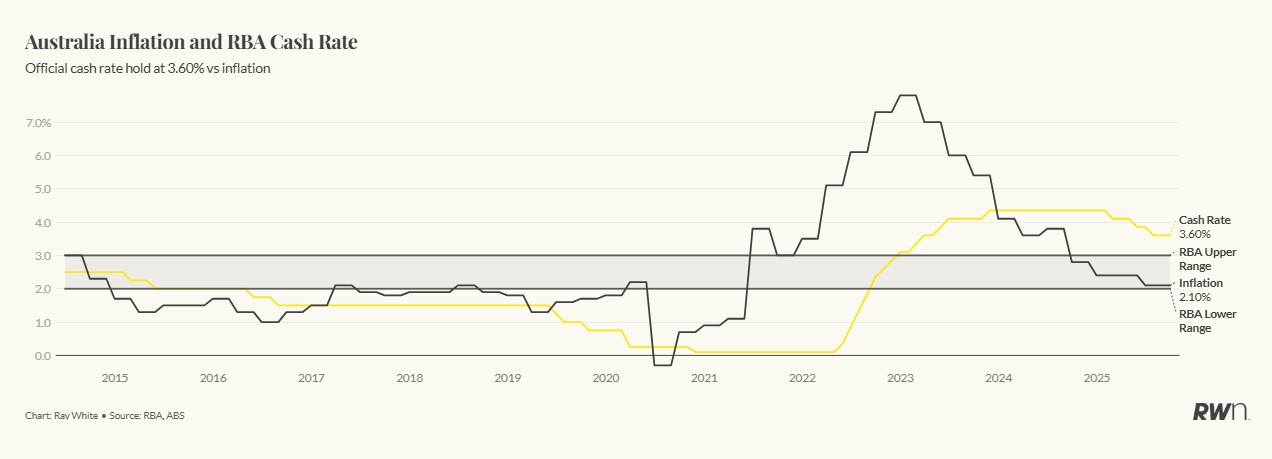The Reserve Bank of Australia has held the cash rate steady at 3.60 per cent today, adopting a cautious stance as mixed economic signals create uncertainty about the appropriate policy response.
While the labour market shows signs of softening with 5,400 jobs lost in August, the RBA has chosen to monitor developments further as headline inflation rose to 3.0 per cent, its highest level in a year.
The decision to hold reflects the central bank’s assessment that while labour market conditions have cooled, with employment growth slowing dramatically since April, current unemployment levels at 4.2 per cent remain consistent with full employment. The RBA appears to be prioritising inflation vigilance following the rise in headline inflation, despite the increase being largely attributed to expiring electricity rebates.
Today’s hold demonstrates the RBA’s careful approach when facing conflicting economic indicators. While the labour market has clearly softened, with the economy adding just 24,000 jobs between May and August compared to 80,000 in the first four months of the year, the central bank appears concerned that premature easing could reignite price pressures.
The rise in headline inflation to 3.0 per cent, while primarily driven by expiring government electricity rebates, may have influenced the RBA’s cautious stance. Despite Governor Bullock’s focus on underlying measures, which showed trimmed mean inflation falling to 2.6 per cent, the central bank appears unwilling to ease policy while headline inflation sits at the top of the target band.
At 4.2 per cent, unemployment remains well below levels that would typically trigger aggressive monetary policy response, providing the central bank with scope to prioritise inflation control over immediate employment support.
The decline in participation rate to 66.8 per cent from 67 per cent suggests some labour market softening, but the RBA appears to view this as manageable given current unemployment levels. This assessment allows the central bank to maintain its cautious approach while monitoring whether labour market conditions deteriorate further.
Having held rates today, the RBA has likely increased the probability of a cut at its November meeting if labour market conditions continue to deteriorate. Financial markets already price in significant easing by year-end, and today’s pause positions the central bank to act more decisively if employment data weakens further.
The November meeting will benefit from additional labour market data and updated quarterly inflation figures, potentially providing the RBA with greater confidence to ease policy. If employment growth remains weak and underlying inflation stays contained, a more substantial policy response could be warranted.
Despite today’s decision to hold rates, Australia’s housing market continues to demonstrate remarkable momentum driven by supply constraints and demographic pressures. Current market dynamics appear sufficiently robust to sustain growth even without additional monetary stimulus, with established trends likely to continue.
